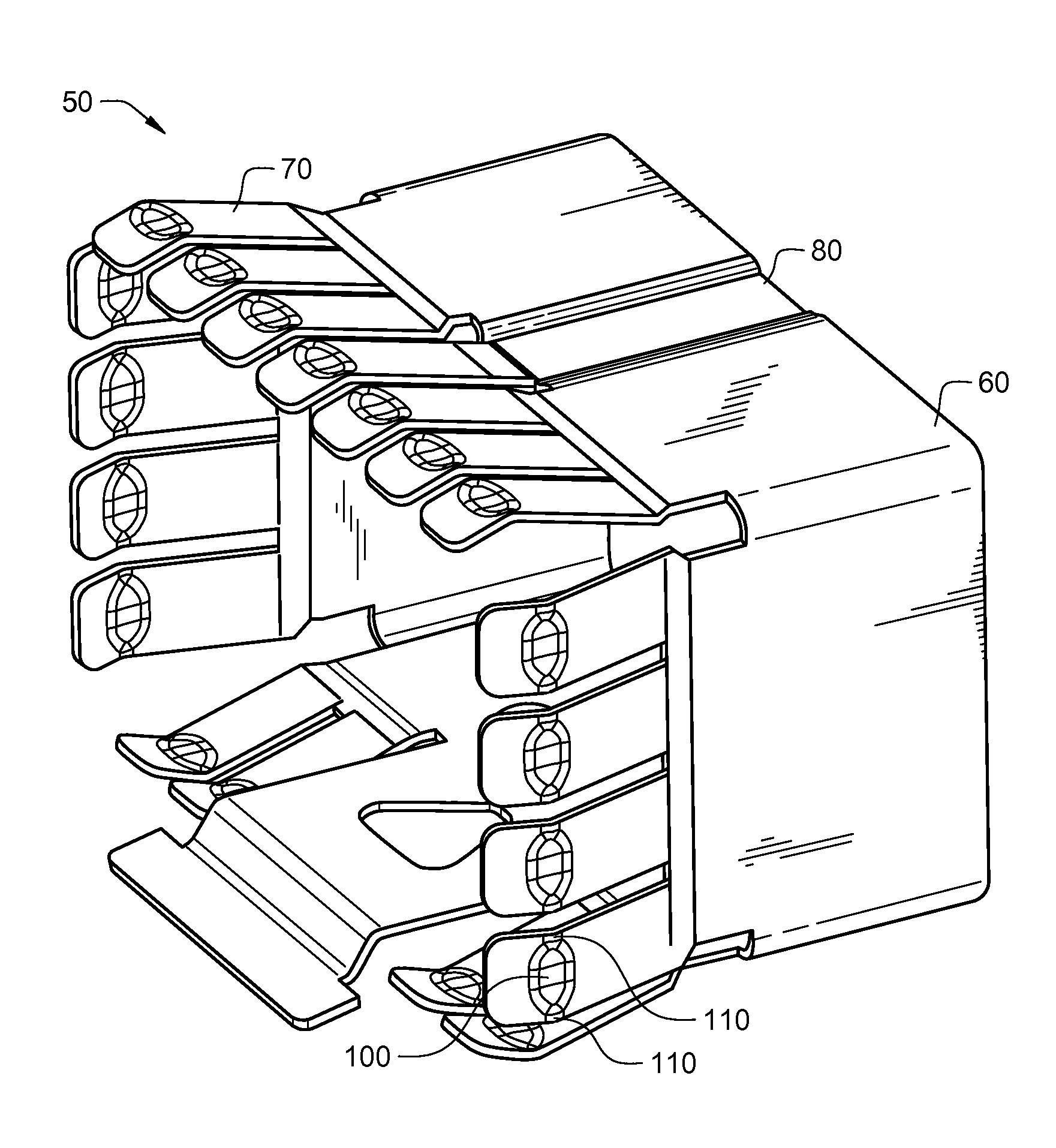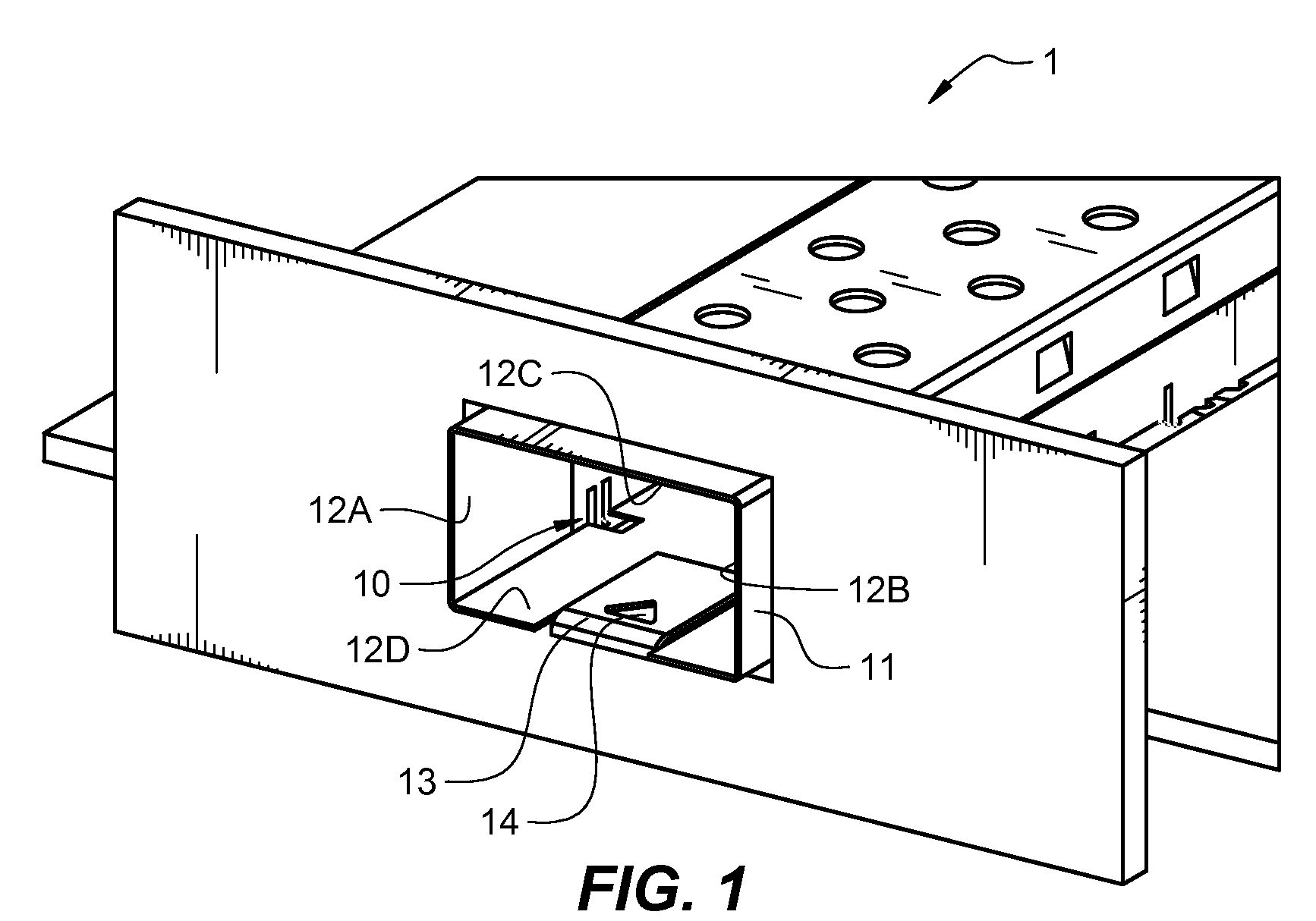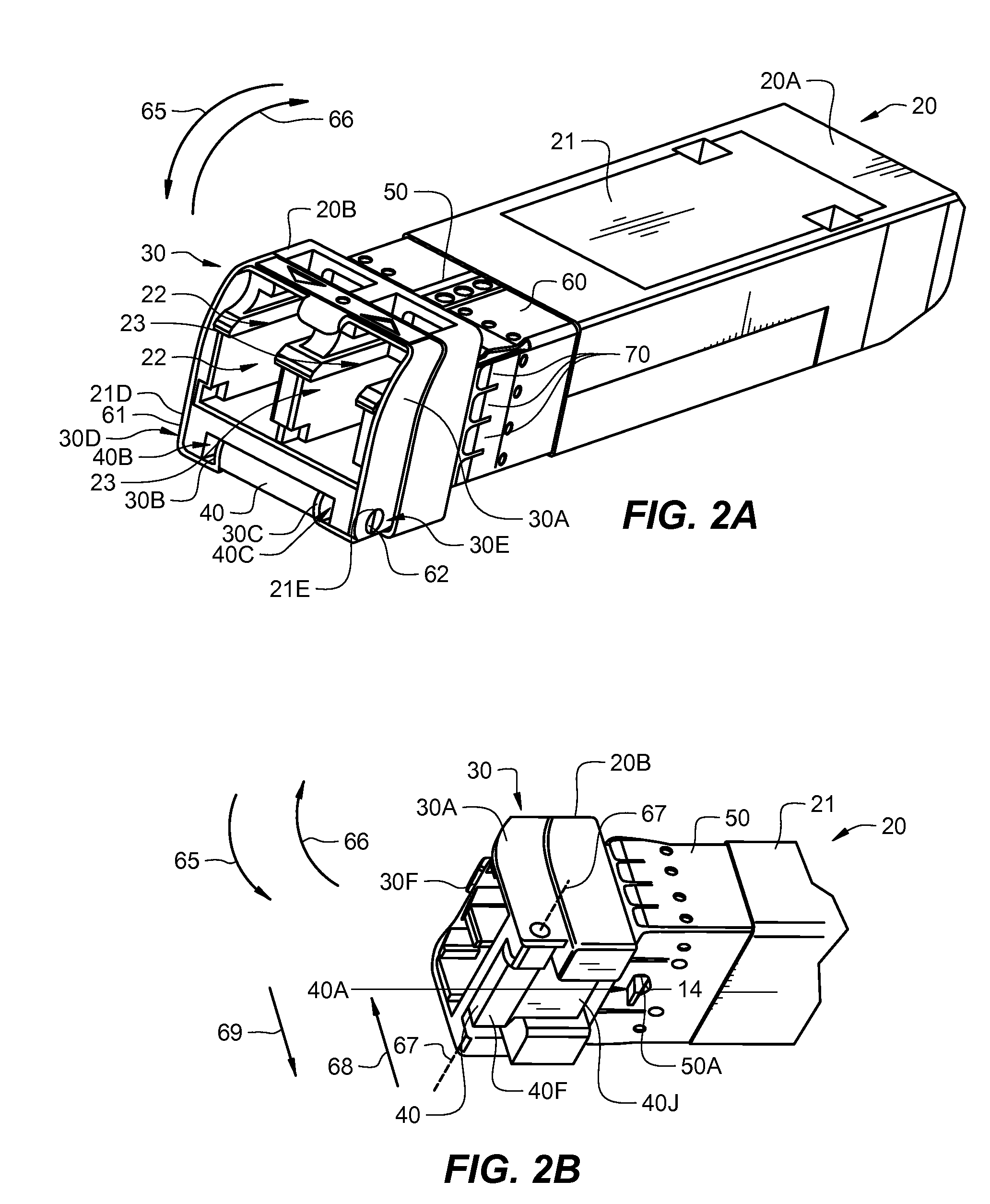Electromagnetic interference (EMI) collar and method for use with a pluggable optical transceiver module
a technology of electromagnetic interference and optical transceiver, which is applied in the direction of coupling device connection, instrumentation, aperture leaage reduction, etc., can solve the problems of limited ability to reduce the spacing of transceiver modules, limited manufacturing techniques, and limited success of transceiver modules, so as to reduce the number of emi apertures and improve emi shielding
- Summary
- Abstract
- Description
- Claims
- Application Information
AI Technical Summary
Benefits of technology
Problems solved by technology
Method used
Image
Examples
Embodiment Construction
[0024]In accordance with various embodiments that will be described herein, an EMI collar is provided that is configured to be secured about a housing of a pluggable optical transceiver module. The configuration of the EMI collar and the method by which the collar is attached to the housing of the transceiver module ensure that the collar will not be damaged when the transceiver module housing is inserted into a cage. Ensuring that the collar will not be damaged during insertion ensures that the electrically conductive contact points on the collar will not be eliminated. In addition, dimples, or indentations, formed on the spring fingers of the EMI collar result in a reduction in the size of the maximum EMI aperture dimension, which greatly improves the ability of the collar to attenuate EMI signals, even those having high frequencies. The improvements in EMI signal attenuation result in an overall improvement in the performance of the transceiver module and in the performance of th...
PUM
| Property | Measurement | Unit |
|---|---|---|
| electrically conductive | aaaaa | aaaaa |
| length | aaaaa | aaaaa |
| areas | aaaaa | aaaaa |
Abstract
Description
Claims
Application Information
 Login to View More
Login to View More - R&D
- Intellectual Property
- Life Sciences
- Materials
- Tech Scout
- Unparalleled Data Quality
- Higher Quality Content
- 60% Fewer Hallucinations
Browse by: Latest US Patents, China's latest patents, Technical Efficacy Thesaurus, Application Domain, Technology Topic, Popular Technical Reports.
© 2025 PatSnap. All rights reserved.Legal|Privacy policy|Modern Slavery Act Transparency Statement|Sitemap|About US| Contact US: help@patsnap.com



